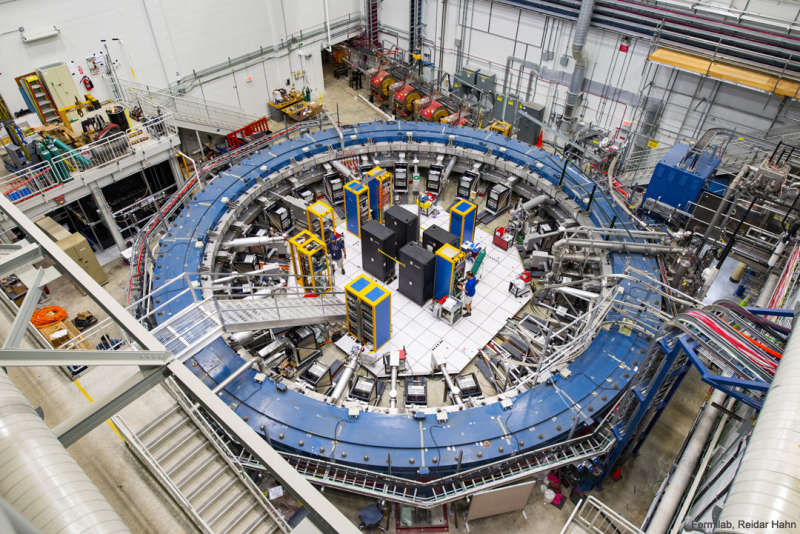
|
Credit & Copyright: Fermi National Accelerator Laboratory;
Photographer: Reidar Hahn
Explanation:
How fast do
elementary particles wobble?
A surprising answer to this seemingly
inconsequential question came out of
Brookhaven National Laboratory in
New York,
USA in 2001, and indicated that the
Standard Model of Particle Physics, adopted widely in physics,
is incomplete.
Specifically, the
muon, a particle with similarities to a heavy
electron,
has had its relatively large wobble
under scrutiny in a series of experiments known as
g-2 (gee-minus-two).
The Brookhaven result galvanized other experimental groups
around the world to confirm it, and pressured theorists
to better understand it.
Reporting in last week, the most sensitive
muon wobble experiment yet,
conducted at
Fermi National Accelerator Laboratory
(Fermilab) in Illinois and
pictured here,
agreed with the Brookhaven result.
The unexpected
wobble rate may
indicate that an ever-present sea of
virtual particles includes types not currently known.
Alternatively, it
may indicate that flaws exist in
difficult theoretical prediction
calculations.
Future runs at
Fermilab's g-2 experiment will further
increase precision and, possibly, the statistical difference between the
universe we measure and the
universe we understand.
|
January February March April May June July August September October November December |
| ||||||||||||||||||||||||||||||||||||||||||||||||
NASA Web Site Statements, Warnings, and Disclaimers
NASA Official: Jay Norris. Specific rights apply.
A service of: LHEA at NASA / GSFC
& Michigan Tech. U.
Based on Astronomy Picture
Of the Day
Publications with keywords: particle physics
Publications with words: particle physics
See also:
